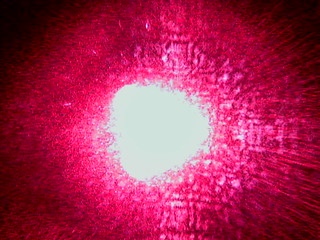Arthritis
is a painful, prevalent condition that afflicts millions every year. According
to the Center for Disease Control (CDC), rhematoid and osteoarthritis, in
particular, affects
nearly 14 percent of adults age 25 and over. Symptoms are wide ranging. Pain
associated with resulting limited mobility is often debilitating, as well.
Evidence indicates laser therapy may provide significant relief.
What’s the difference?
Although
certain types of arthritis manifest very similar symptoms, their underlying
causes may be very different. For example, osteoarthritis and rheumatoid
arthritis both result in painful joint and limb stiffness; one originates from
mechanical degenerative causes while the other is an affliction of the
autoimmune system, however. Other types such as infectious or hemorrhagic
conditions stem from site bacteria or bleeding. According
to the U.S. National Library of Medicine, laser therapy helps reduce pain and
improves site flexibility for patients with rheumatoid arthritis. Therapeutic
lasers did not elicit similar results for osteoarthritis. Reports
do indicate positive effects for patients with milder forms of the condition.
<http://www.jrheum.com/abstracts/abstracts00/1961.html>.
How does it work?
When you
get hurt or feel pain, celling signaling is partly responsible for telling your
brain “what’s what.” Neurotransmitters
deliver pain messages. Think of them as a kind of “mailman”; synapses are the
roadway the mailman drives along. Laser therapy works <http://www.chiroeco.com/chiropractic/news/14600/1/article/>
by exciting these biochemical responses. Of course, your body already does this
without laser therapy; processes stunted by injury, however, may not affect
cell signaling properly diminishing a person’s ability to heal. Laser
treatments give the body an added healing edge, so to speak. Pain from extreme
site immobility, for example, is sometimes the result of inflammation;
a naturally occurring autoimmune response to illness or injury. In some cases,
inflammation can go awry perpetuating further strain or injury and so forth.
Arthritic patients often experience perpetuating symptoms under such
conditions. Energy emitted from lasers excite mechanisms that drive the
metabolism and nervous system that remedy illness. It results in increased
hormone, cell and neurotransmitter production.
What’s the “buzz?”
In the
future, laser therapy will allow for more personalized, individual attention to
specific needs. Rather than a simply randomized effect on problematic tissue,
scientists will soon have the ability to isolate or “tweeze” individualistic
cells. This will allow practitioners to more effectively deal with a host of
rheumatoid disease and subsequent effects.
Dr. Dave Edenfield is part of the team of doctors and therapists athttp://lakewoodchiropracticjax.com who are dedicated to helping you and your family lead a healthier, happier and pain-free life.



I can't say how effective laser therapy is when it comes to treating arthritis. But I have can say that it has helped me with neck and back pain. I highly recommend it
ReplyDeleteI have arthritis for 10 years and have learned to come in terms with it. I find it easy to minimize arthritic pain by avoiding foods like eggplant and white potatoes. Tomatoes are just hard to avoid these days because they're in most of the products I consume from soups to pizzas. If I eat them, it's only a matter of hours before the pain strikes.
ReplyDeleteMy Hip Fractures Blog